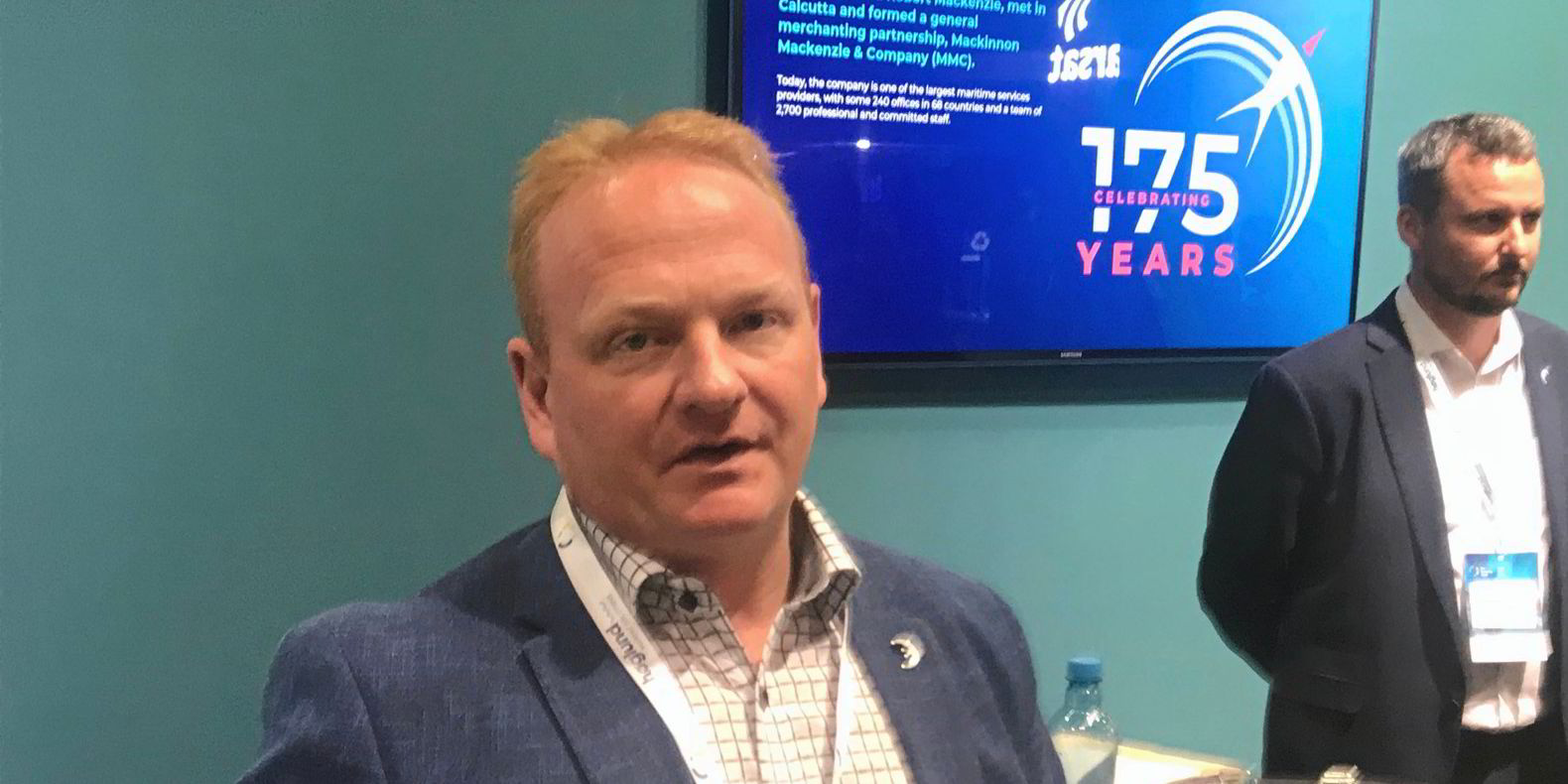The port agency business model is broken, believes Frank Olsen, and he has been waiting for the right backers to let him fix it.
The new owners emerged last week. TradeWinds reported then that UK investment Epiris had purchased 175-year-old Inchcape Shipping Services from Dubai state investment company Istithmar World. But the deal has been some time in the making.
Olsen, the Norwegian chief executive of London-based Inchcape, told TradeWinds he had been talking with Epiris since March 2017 about a possible deal.
Epiris is a diversified and situation-specific rather than sector-specific investor, said Olsen, with holdings ranging from UK restaurant chains and pension providers to advanced materials companies, but no others in maritime industries.
Interviewed at Inchcape’s stand at the recent Nor-Shipping conference, he told TradeWinds he is now awaiting the formal closing of the deal. Inchcape will then move swiftly in its bid to consolidate the port agency industry, Olsen said.
The formal hold up is regulatory approval from Kuwait, expected within four to six weeks.
Once that hurdle is passed, Olsen has a shortlist of five regional or local port agencies with whom he has been in talks for some time, he said. His long list has 20 names, but not all of them know they are on it.
He was loath to criticise his former owners, but explained that in 2006 when Istithmar acquired Inchcape, Dubai was at the height of its exuberant expansive phase.
That was before the global financial crisis took the wind out of Dubai’s trademark sail.
But new owner Epiris is ready to back Inchcape’s organic growth plans as well as the takeovers it has targeted.
“We have a very fragmented industry,” he said.
Today Inchcape has 2,700 employees in global offices that serve some 2,200 ports, with about 80,000 port calls a year. Sector strengths range from tankers to cruise. That puts it among three market leaders, alongside Dubai-based Gulf Agency Co and Norway’s Wilhelmsen Port Services.
But in the port agency market, even the three biggest players only control slivers, each with only 5% or 6% market share. Then come a few larger regional companies, but about 80% of the port agency market still consists of small local players, Olsen said.
“There is a plethora of good agents but they are all subscale, low-margin businesses,” said Olsen.
In its first takeover transactions for local port agency businesses, Inchcape looks to incorporate key local talent into its network.
“There is an element of buying customers, but we are also buying know-how,” he said.
Olsen believes acquiring established agents and plugging them into Inchcape’s global network will produce results independent agents could not offer their clients on their own.
“We are looking at all regions and we have a live and active pipeline,” he said.
The first and most obvious port agency takeover targets will be in Europe and the Americas, both North and South, Olsen said. Later goals include Africa, where the big port agency groups have the least comprehensive coverage. Inchcape now has presences in Ghana, Nigeria and Namibia.
‘Not a tech company’
What a good port agent can offer a shipowner through detailed knowledge of port operations and local conditions includes not just a shorter time in port but a more effective use of that time, and Olsen said Inchcape’s procurement scale and local insight let it offer cost savings, time savings and also carbon savings by helping the owner get to port at the right time.
He said he dislikes the term “just-in-time arrival” and prefers “right-time arrival”. That means, for example, helping the owner avoid hurrying into port only to arrive at the moment the local pilot station’s shift is changing.
Digital networks help, he said, but only as a tool for a people network.
“We are not a tech company, we are a people company,” Olsen said.
“Our digital systems and solutions are enablers, but they only work on the basis of our human network. Our digital systems let us collect, analyse, and transmit the information that we gather from our human network. We have 80,000 port calls a year and have had for several years, so we have an extremely good ability to predict what is going to happen in a port call based on what happened at the same time at the same port last month and last year.”




